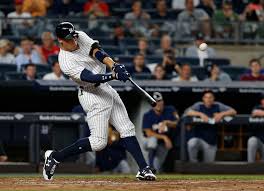
Leveling the Playing Field: Why Baseball Needs a Standardized Bat
In the game of baseball, where fractions of a second and inches can determine the outcome of an at-bat, the tools players use matter immensely. At every level—from Little League to college—metal bats have replaced wood as the norm, promising better performance, longer durability, and improved player confidence. However, the current landscape of bat technology, particularly within the BBCOR (Batted Ball Coefficient of Restitution) certification framework, has created an uneven playing field. Despite being regulated, BBCOR bats still produce widely varying results due to differences in material, construction, barrel design, and performance after break-in. This disparity makes it increasingly difficult to evaluate true player ability and undermines the fairness of competition. For the sake of integrity and accurate player development, it is time to introduce a standardized bat that eliminates these performance inconsistencies.
Performance Gaps Among “Certified” BBCOR Bats
The BBCOR certification was introduced in 2011 to replace the dangerously powerful BESR bats, which allowed high school and college hitters to generate unsafely high exit velocities. BBCOR intended to level the playing field by reducing the trampoline effect of bats to mirror the performance of wood. Yet, within this standard, bats differ considerably.
Take, for example, two of the most popular and widely used BBCOR bats in the market today:
1. DeMarini Voodoo One (One-Piece Alloy)
Known for its balanced swing weight and stiff feel.
Generates consistent power for high bat-speed hitters.
Average Exit Velocity (EV): ~88–91 mph in high school/college testing.
Sweet Spot Size: Medium.
Break-in Period: None—ready out of the wrapper.
2. Louisville Slugger Meta (Composite Barrel, Three-Piece)
Designed with a larger barrel and highly responsive sweet spot.
More forgiving on mishits, especially for contact hitters.
Average Exit Velocity (EV): ~90–93 mph after break-in.
Sweet Spot Size: Large.
Break-in Period: 300–500 swings to reach peak performance.
Despite both being BBCOR-certified, the Meta often shows 2–4 mph higher exit velocity once fully broken in. Over the course of a season, this seemingly small difference can be the difference between a warning track flyout and a home run—or a groundout and a line drive single.
Moreover, mishits on the Meta are more forgiving, allowing players to maintain better ball flight even with imperfect contact. For athletes evaluated using metrics like exit velocity and distance—common in today’s scouting and analytics-heavy landscape—this puts the Voodoo One user at a disadvantage through no fault of their own.
Evaluation and Equity
Talent evaluation in baseball should be about ability, not equipment. Yet, when different bats produce different metrics—exit velocity, launch angle, and hit distance—scouts, coaches, and performance systems may misread who the superior player is. One athlete swinging a composite bat like the Meta may consistently post exit velocities 4–5 mph higher than another using a stiffer one-piece alloy bat like the Voodoo One. This skew not only distorts merit-based evaluations but also potentially shifts scholarship opportunities, draft selections, and training focus away from the real indicators of talent.
This issue also exacerbates inequities in access. High-performance bats such as the Louisville Slugger Meta retail for over $500, while more affordable models like the Voodoo One are typically around $300. For families with limited financial resources or teams in underfunded programs, players are often forced to settle for lower-tier equipment, despite having equal—or even greater—talent.
The Case for Standardization
Introducing a uniform standardized bat—analogous to the single-spec ball used in most sports—would address these disparities. By removing design variation and material-induced performance gaps, all players would compete on a truly equal platform. Coaches and scouts could evaluate ability based on consistent metrics like timing, swing mechanics, and contact quality without the noise of bat variance.
Furthermore, standardization would reduce equipment-related arms races among teams and families chasing the latest bat models. The focus would return to fundamentals: skill development, discipline, and strategy. In the long term, this shift would better prepare players for the professional level, where wooden bats are the standard, and bat performance is neutralized.
Addressing the Counterarguments
Opponents may argue that standardization stifles innovation and reduces consumer choice. But in a competitive sport where fairness and development matter more than marketing margins, some technological constraints are not only acceptable—they are necessary. Standardization does not mean reverting to wood for all players or eliminating safety-enhancing designs. It simply means setting stricter, more uniform parameters for allowable bat performance, or issuing a league-wide standard bat to ensure competitive balance.
Conclusion
Baseball thrives on precision and fairness, yet the current state of BBCOR bat diversity undermines both. As the comparison between the DeMarini Voodoo One and Louisville Slugger Meta demonstrates, even within the same certification class, bat performance can differ significantly. The fact that some “legal” bats produce considerably better results than others means that we are not measuring talent—we’re measuring technology. To preserve the integrity of youth and collegiate baseball, promote equity, and improve talent evaluation, the time has come for governing bodies to adopt a standardized metal bat. Only then can we ensure that success on the field reflects the player’s ability—not the engineering behind their bat.




